If you've been following along in our jersey countdown – through the ranges of 1-10, 11-20 and 21-30 so far – you might have leveled two specific bits of criticism at me about my picks:
1. A recency bias or favoritism towards the portion of Bucs history I've seen in person. Twenty-one of the first 30 players picked have been on the team in the 2000 season or later.
2. A temporary bout of insanity when I picked Jeff Garcia over Martin Gramatica at number 7.
I have since seen the error of my ways on that second one and I offered a retraction earlier this week. However, I swear I have not purposely slighted the first quarter-century of Buccaneers history. And I think you're going to see the truth in that in today's installment of the jerseys from 31 to 40. For some reason, the early Buc stars didn't favor numbers in the 20s, and the idea of receivers in the teens didn't come along until the mid-2000s. But the 30s (and next week the 40s) are here to even things up a little bit.
That's what you're going to find out as we continue running down the list from 1 to 99 to identify the top player in Buccaneers history in each jersey number. As always, we are considering only what a player has done in each number as a Buccaneer. And, if a player wore more than one number during his Tampa Bay tenure his argument for any of those numbers include only what he did while wearing each one.
Some of these choices are inevitably going to be tougher than others, either due to too many good candidates or too few solid choices, so we're also noting the "level of difficulty" of each choice. Like the 20s, the 30s feature mostly running backs and defensive backs.
31: CB Phillip Buchanon
This number is a wasteland. The only person to wear it for more than two seasons in the first two decades of franchise history was a safety named Craig Curry who made 17 starts as a Buccaneer. There are plenty of perfectly fine players who wore the number – Darryl Pollard, Tim Wansley, E.J. Biggers, Floyd Young – but no one who really stands out. From 1976 through 2006, the assembled number 31s in Buccaneer annals had racked up a combined total of 21 AV (or "approximate value" as calculated by Pro Football Reference and explained here). As a comparison, Chris Godwin already has 20 AV through his first three seasons. Jordan Whitehead, the most recent 31, is seriously a consideration here after just two years, but he has moved to 33 so forget that. Buchanon and Biggers are the only two to reach double digits in AV and Buchanon started 33 games and had seven interceptions over three Buccaneer campaigns. Antoine Winfield, Jr. is inheriting 31 from Whitehead and could make a quick run at the top of this list.
Level of Difficulty: 8.
If leaving a number blank was an option (it's not), I might have done so here, and at number 15.
Buccaneers.com's Scott Smith takes a look at the best player in Buccaneers history to wear uniform numbers 1-10.
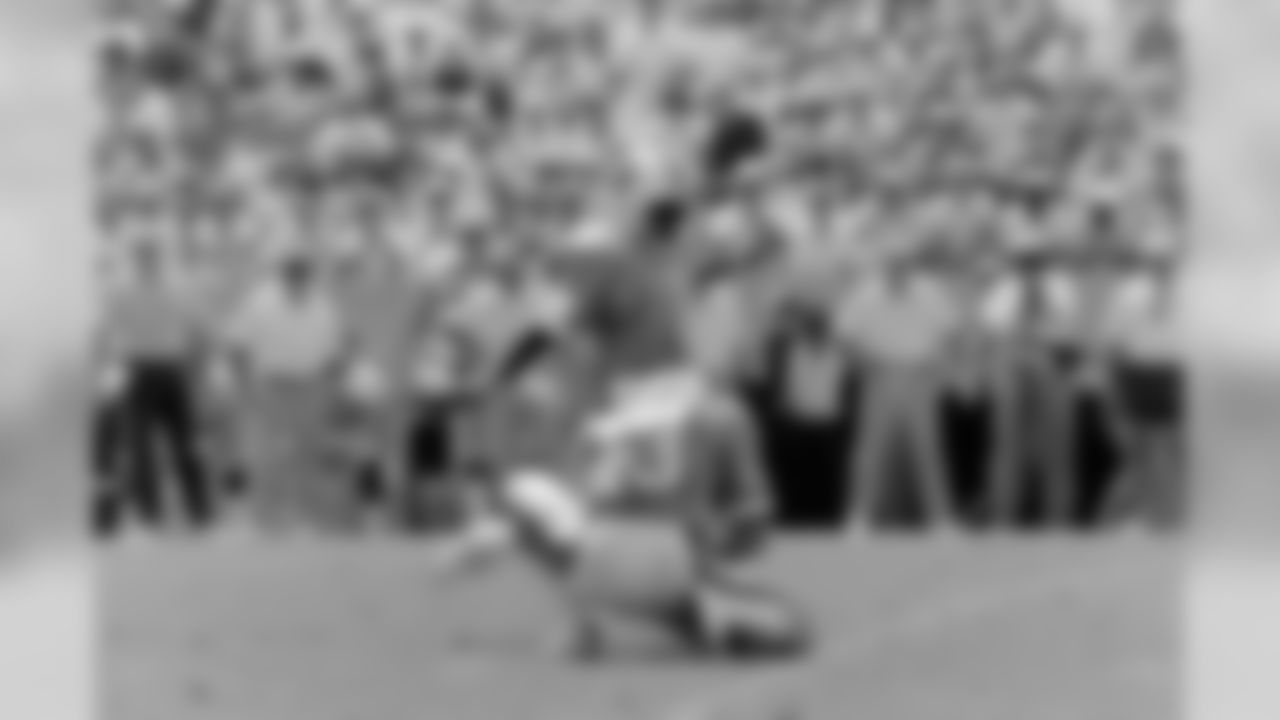
P Donald Igwebuike

QB Chris Simms

QB Jameis Winston
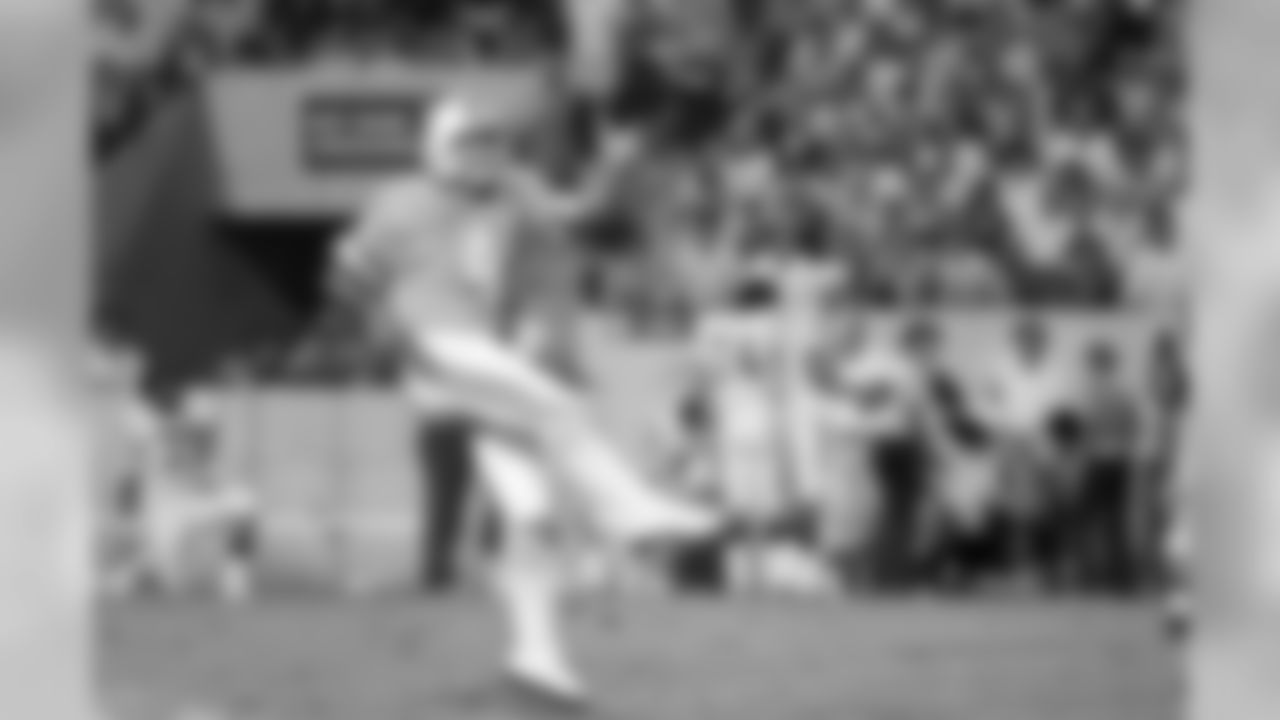
P/K Dave Green
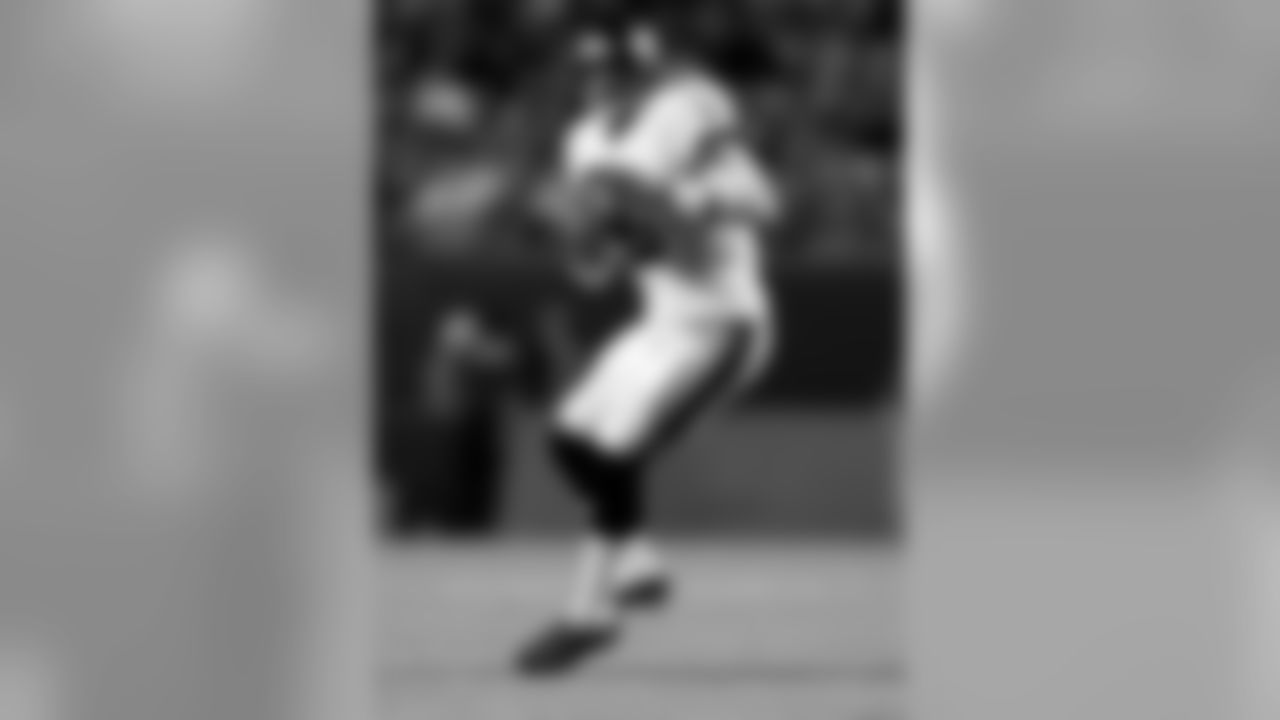
QB Josh Freeman

P/K Neil O'Donoghue
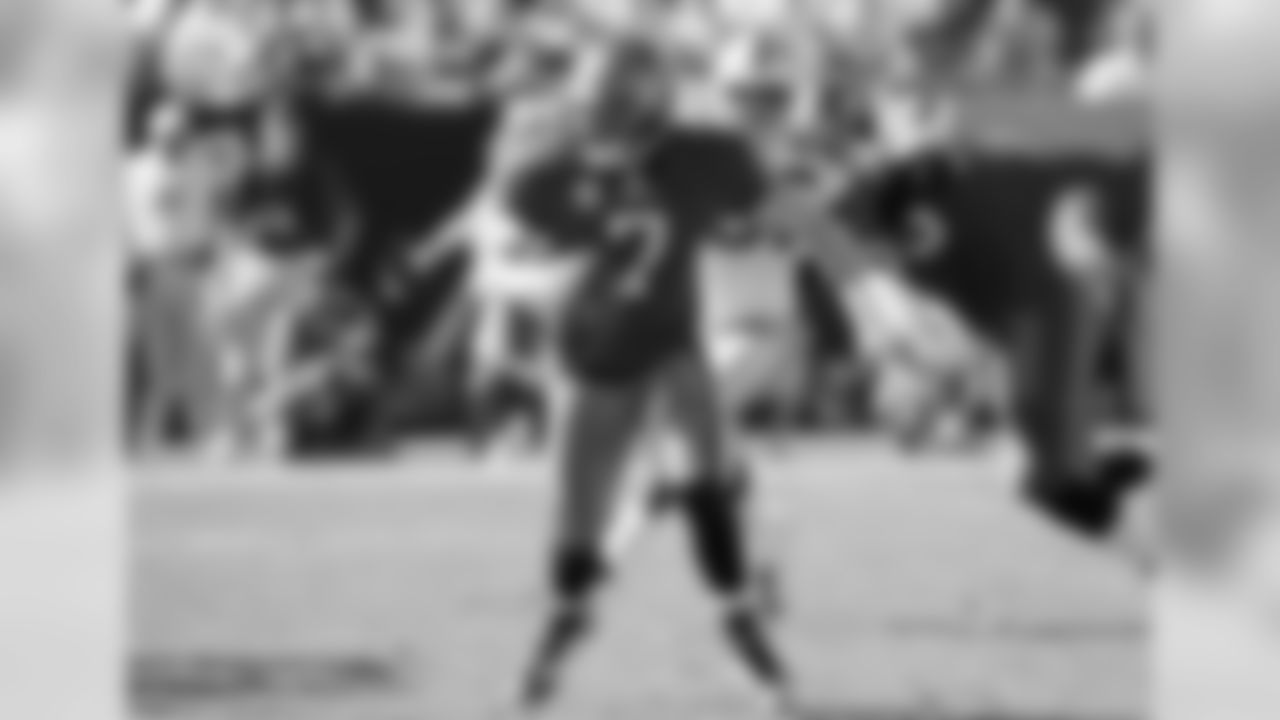
QB Jeff Garcia

QB Brian Griese

P Josh Bidwell

QB Shaun King
32: RB James Wilder
Whew. I needed an easy one after starting out with 31. To be clear, there have been plenty of good number 32s in Buccaneers history, as one would expect from what is clearly one of the all-time best numbers available to running backs. Louis Carter got it first and was the team's leading rusher during the inaugural 1976 season. Later one, Errict Rhett and Michael Pittman put up big numbers in that jersey, and most recently Jacquizz Rodgers had some of the best games of his career as the Bucs' number 32. Pittman would have a strong argument at many other 30 numbers but he can't unseat Wilder, who is the team's all-time leader with 5,957 rushing yards. His 1,544 yards in 1984 remain a team single-season standard and there's never been a Buccaneer with a bigger share of the offense than Wilder had that year. His 407 carries in '84 were briefly an NFL record and he also caught 85 passes for another 685 yards. Wilder is also second only to Mike Evans in career receptions in Buc annals, with 430.
Level of Difficulty: 2.
It's really more like a 1, but I just wanted to acknowledge once again how good Pittman was. He should have worn 31.
33: S Mark Cotney
Here's where we start to pay tribute to the pillars of the Buccaneers' first great defense, which ranked first in the NFL in 1979 and led the franchise to the NFC Championship Game in just its fourth season. Cotney played one year in Houston before coming to Tampa and holding a starting role for most of the next eight seasons. He finished his career with 17 interceptions, including five in his final NFL campaign. He and the next man on this list were cornerstones of a defense that helped the Bucs make their first three playoff appearances. After Cotney, 33 seemed to be a number that most guys wanted to get away from, for some reason. Reggie Cobb wore it for one season before switching to 34 after Lars Tate departed. Earnest Graham had to toil through two 33 seasons before also changing to 34. Jameel Cook couldn't get 43 back in his second stint with the team because Elbert Mack had it in 2008, so he ended up in 33 for one season. Weirdly, Mack then switched from 43 to 33 after Cook left again. Carlton Davis just had two promising seasons in 33 but now he's moving to 24 and Jordan Whitehead is sliding into 33.
Level of Difficulty: 2.
Might have been tougher if Cobb or Graham had stuck with 33 but as it stands the original is still the king of the hill.
34: S Cedric Brown
I tend to think that 34 is a better number for running backs than defensive backs but Brown would disagree, as would Super Bowl XXXVII MVP Dexter Jackson. And yes, Jackson has an argument here, particularly because of that MVP award, but Brown's tenure as a Buccaneer was longer and more productive. He played in exactly 100 games and started 95 of them, and his 29 interceptions stood as the team's career record until Donnie Abraham finally broke it in 2000 (later to be surpassed by Ronde Barber). Brown made the Bucs as an undrafted free agent in 1976 but only played in one game that season and was then traded to the Raiders. However, the Bucs re-signed him when he was cut before the season by Oakland and he immediately became a long-term starter in a very good secondary. This one wasn't easy; Brown has had to weather number-34 challenges from the likes of Tate, Cobb, Jackson, Graham and Charles Sims. I would have been fine with Cobb, Jackson or Graham here but Brown hasn't been surpassed yet.
Level of Difficulty: 6.
There are so many good choices here. I'm sure the three I mentioned above would all have their backers.
Buccaneers.com's Scott Smith takes a look at the best player in Buccaneers history to wear uniform numbers 11-20.

WR Adam Humphries

QB Doug Williams
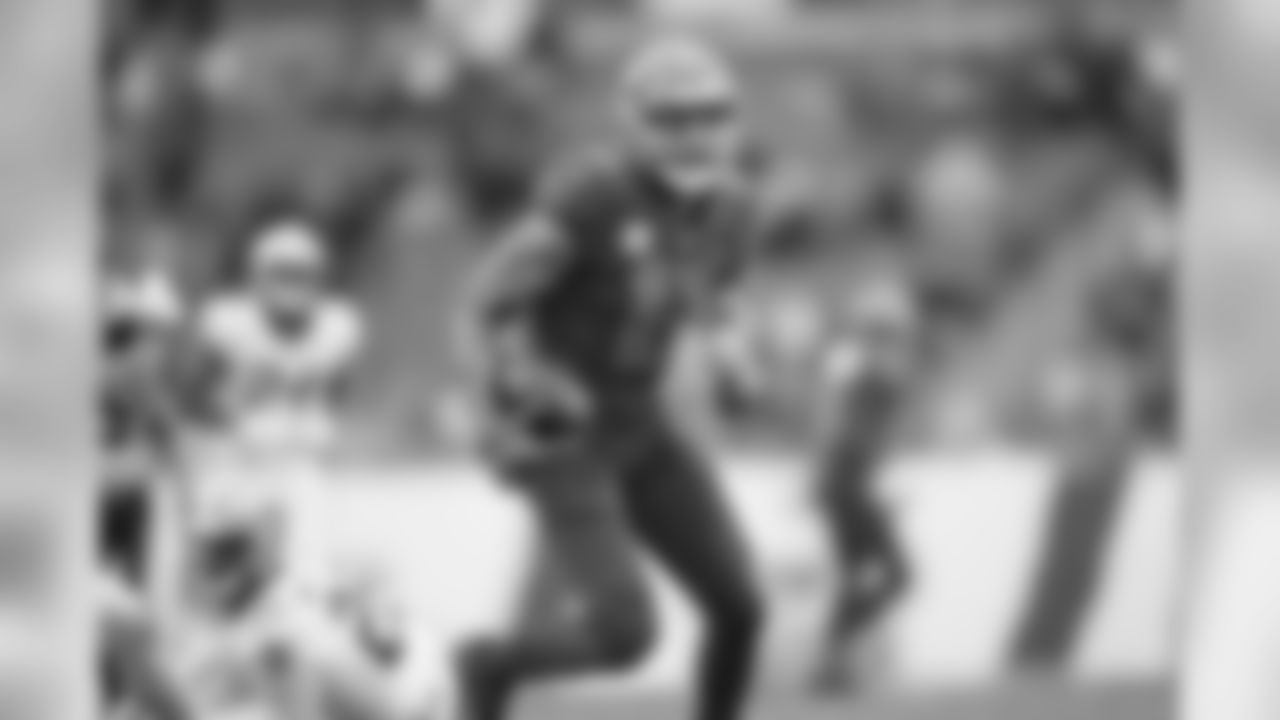
WR Mike Evans

QB Brad Johnson

QB Mike Rae

P Tom Blanchard

QB Steve DeBerg

WR Sammie Stroughter
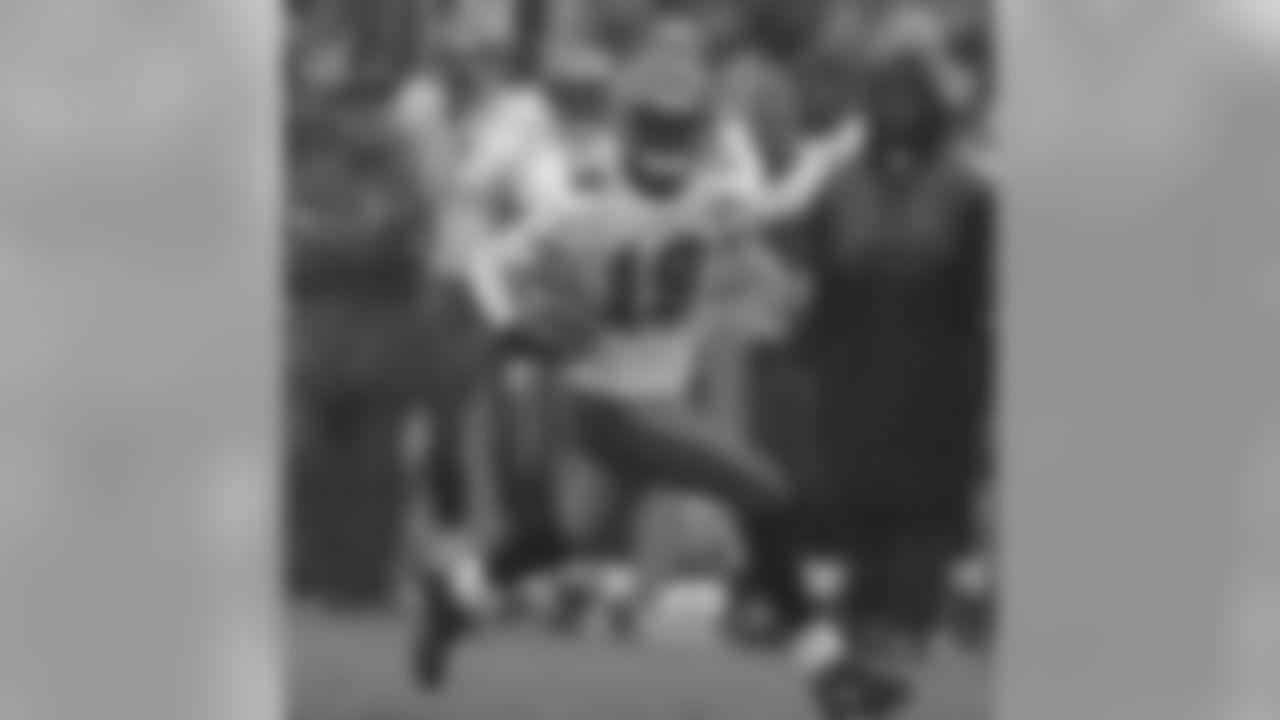
WR Keyshawn Johnson

CB Ronde Barber
35: CB Martin Mayhew
This one doesn't quite take us back to the first era of Buccaneer success but it does at least highlight a player from the first half of the '90s, before the franchise rose to contender status again. Mayhew was part of the first class of true free agents for the Buccaneers, and he's overshadowed in that regard by fellow 1993 newcomer Hardy Nickerson but he gave the franchise four years of starting at cornerback, opening 59 games from 1993-96. Mayhew had tallied 13 interceptions over his previous three seasons with Washington, and while he didn't quite match that production in Tampa he did secure eight picks from 1994-96, including five in 1995. He also scored on a 78-yard fumble return against Minnesota. There isn't a whole lot of 35 highlights in Bucs history, but fullback Jimmy DuBose did some good things in the early years and cornerback Corey Ivy was a special teams standout on the Super Bowl team. Cornerback Jamel Dean has it now, and given the production he put up in basically half of a season as a rookie in 2019 he could quickly start to challenge Mayhew.
Level of Difficulty: 4.
No one really blows me away at number 35 but Mayhew wore it as long as anybody and was a solid contributor.
36: S Tanard Jackson
The 36 jersey seems a little awkward. It doesn't feel like a natural fit for either a running back or a defensive back, though I'm sure Jerome Bettis and LeRoy Butler would disagree. For the Bucs, it was first notably carried by safety Bobby Futrell from 1986-90. After that, it was only donned for five different seasons by five different individuals until Jackson arrived in 2007. He actually started in 28 but switched in 2008 to accommodate the returning Warrick Dunn. Jackson would go on to play four seasons in 36 and pick off eight passes, even though he was limited to two games in 2010. In 2009, Jackson intercepted five passes and returned two of them for touchdowns. The 36 jersey seems to have become more popular in the past decade, being chosen every year except 2014 by mostly defensive backs, including Danny Gorrer, D.J. Swearing, Robert McClain and now M.J. Stewart.
Level of Difficulty: 3.
Jackson's hold here might not survive a run by a future number 36 for very long but Futrell is the only other real option.
37: S Keith Tandy
The only players to wear this number for more than a single season from 1976 through 2011 were fullback Anthony McDowell and tailback Jerry Ellison. Ellison probably had this wrapped up to that point, even though he topped out at 678 yards from scrimmage and 354 kickoff return yards over four Buc campaigns. That made the path pretty clear for Tandy, one of the better sixth-round picks in team annals. Tandy's opportunities to start were sporadic – he had a career high of five starts in both 2013 and 2016 – but when he did get on the field he almost always produced. He had three interceptions during his first defensive cameo and was particularly hot down the stretch in 2016 with four picks, several of which were of the game-clinching variety. When not starting, he was a top contributor on special teams and something of a coach on the sidelines.
Level of Difficulty: 2.
My recollection of Ellison's numbers turned out to be inflated, so this wasn't as close as I originally thought it would be.
Buccaneers.com's Scott Smith takes a look at the best player in Buccaneers history to wear uniform numbers 21-30.
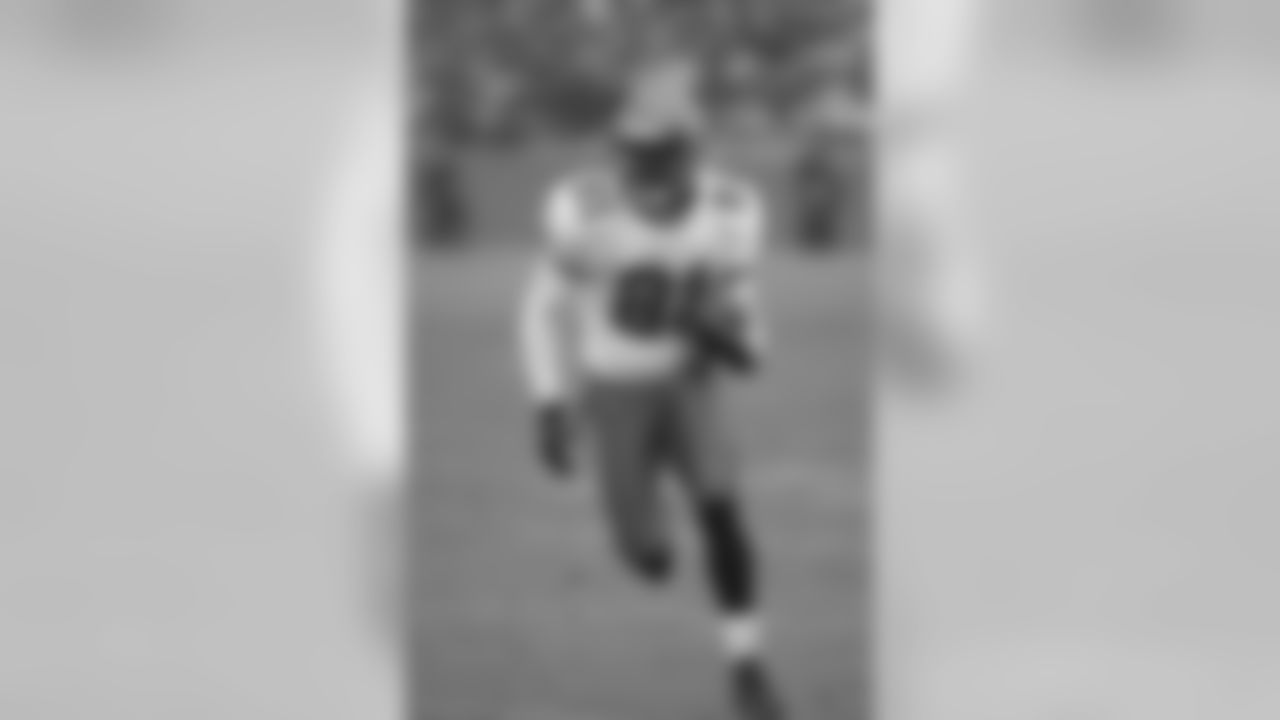
CB Donnie Abraham

RB Doug Martin

S Jermaine Phillips

RB Cadillac Williams

CB Brian Kelly

CB/S Dwight Smith

RB LeGarrette Blount
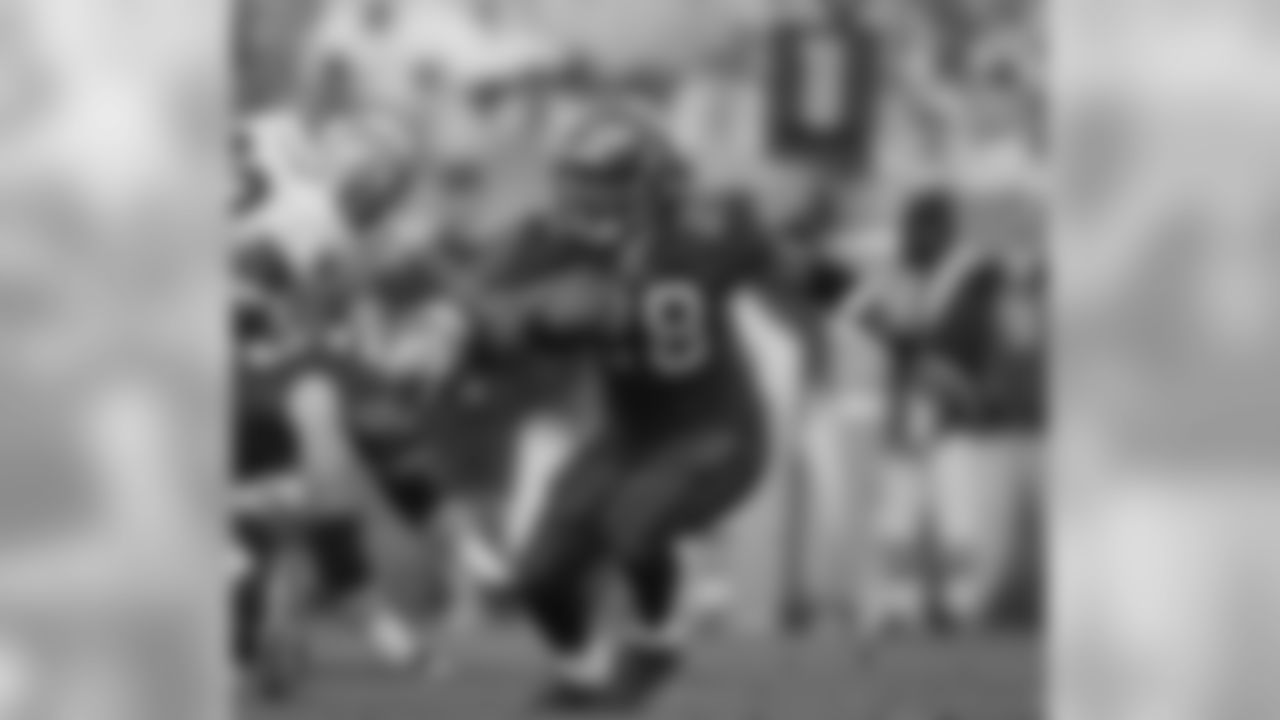
RB Warrick Dunn
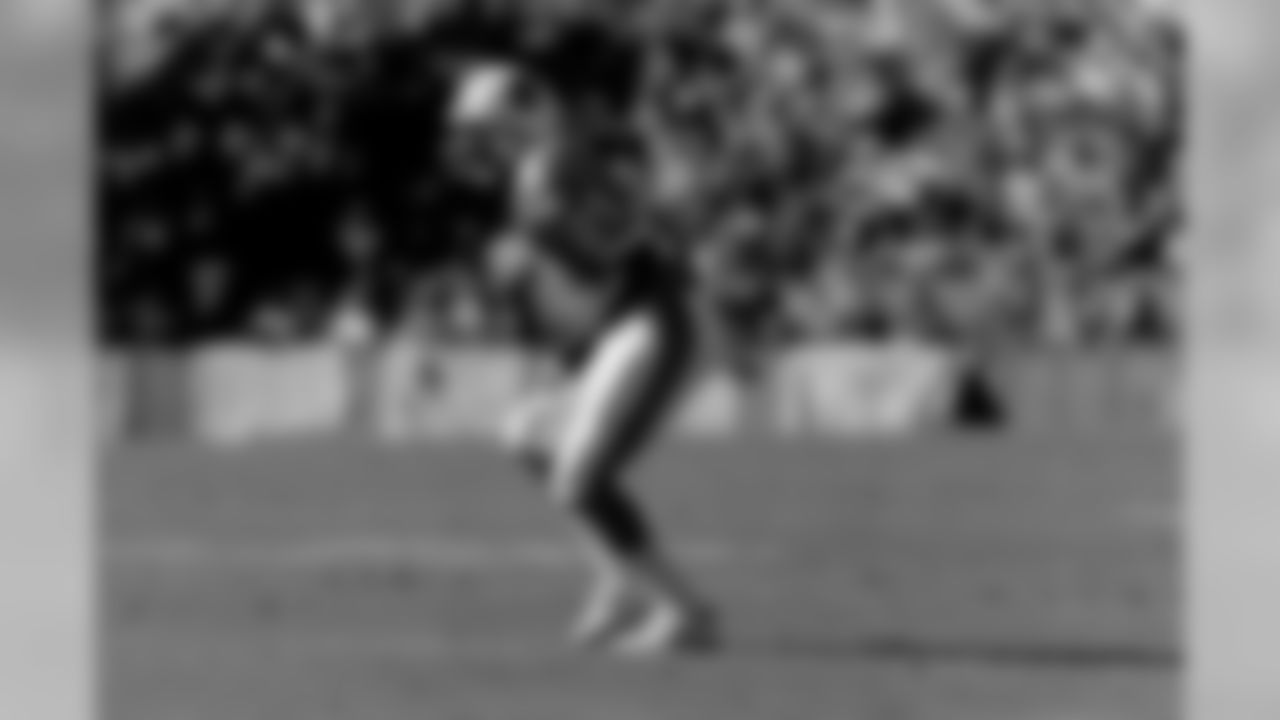
CB Ricky Reynolds

S Mark Robinson
38: FB Johnny Davis
This was the player taken in the second round right after the first-round choice of Doug Williams in 1978. Davis probably didn't get close to the return on investment the Bucs wanted from a pick that high but he played three seasons, started 20 games and simply hasn't had anyone take this spot away since. Davis ran for 721 yards and six touchdowns over those three years, including 370 and three scores as a rookie. The other options come down to safeties John Howell and Dashon Goldson. Howell was with the team for four seasons but was mostly a (good) special teams player, while Goldson was a high-profile free agency signing that didn't' work out as well as anticipated.
Level of Difficulty: 5.
Another number at which I might have just taken a pass if that was allowed.
39: S Harry Hamilton
Numbers in the high 30s just weren't in vogue for much of the Bucs' history. No one even wore it in a game until 1987 and it had seen action in exactly five games through that year, two of them replacement contests. Then Hamilton came along in 1988 and locked it down for four years, starting 50 of the 52 games in which he played. He and Abraham are the only players in team history to record five or more interceptions in three straight years; that's good company for Hamilton. Charles Dimry followed in the 39 jersey from 1994-96 and is also a strong consideration but with 39 starts and four interceptions he just doesn't match Dimry's ledger. Andrew Adams wore it last year but has since switched back to 26, which is what he wore for the Bucs in 2018.
Level of Difficulty: 5.
This is probably one in which my bias shows a bit because I saw Dimry play in person but Hamilton was before my time. Perhaps I'm giving Dimry too much credit but either way he doesn't have the raw numbers to unseat Hamilton.
40: FB Mike Alstott
This one is a bit unfortunate because there are two very good players and prominent Bucs who wore this number for a long time, and both deserve recognition. We'll start with cornerback Mike Washington, who was a secondary stalwart along with the aforementioned Cotney and Brown from 1976-84. Washington ranks fourth in team history in interceptions with 28, just one fewer than Brown secured. Had Alstott not come along, this would be an easy choice over contenders Gary Anderson and Donnie Elder. But, of course, Alstott did come along and played 11 seasons, in the process taking a bulldozer to Wilder's franchise touchdowns record. Alstott finished with 71 touchdowns; Mike Evans is currently second with 49. Alstott stands fourth in team annals in points scored (432), second in rushing yards (5,088), fifth in receptions (305) and tied for first in Super Bowl rings. He also scored seven postseason touchdowns; nobody else in franchise history has more than two. And you could erase all those numbers and just show a Buccaneers fan a highlight reel of his best second and third-effort runs and he would still win this easily.
Level of Difficulty: 4.
Any Bucs fan clicking on this article would know what they would find when the scroll down to 40, so it wasn't exactly a hard pick. But few of the other "locks" on this list had the kind of competition that Alstott did from Washington.
**
If you thought the upper 30s were a little sparse on this list, wait until we get to the 40s next Tuesday. Let me put it this way: One of them is a long-snapper, whose main competition was another long-snapper.




































